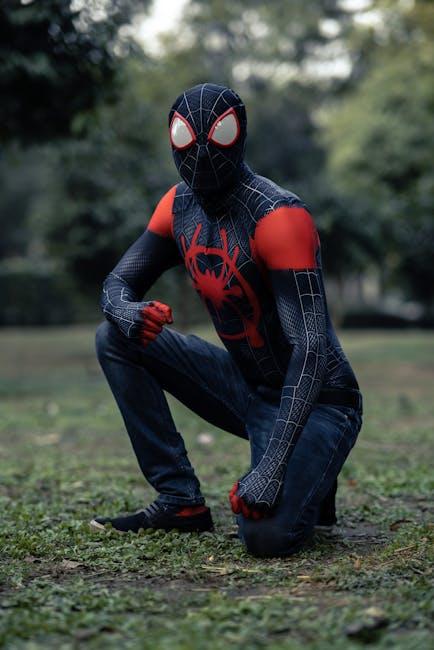In recent years, the cinematic landscape has been dominated by caped crusaders and masked vigilantes, with superhero films consistently breaking box office records and capturing global audiences. Yet, as these larger-than-life figures continue to populate our screens, a growing discourse questions whether the genre’s prevalence is leading to an over-saturation of the film industry. This analysis delves into the dynamics of this trend, examining its impact on cinematic diversity, audience fatigue, and the creative challenges faced by filmmakers. As we navigate the vibrant yet crowded world of superhero cinema, it’s essential to assess whether this phenomenon is invigorating the industry or stifling its potential for innovation.
Impact on Box Office Revenue and Audience Engagement
The superhero genre has undeniably reshaped the landscape of box office revenue, becoming a powerhouse in the film industry. Blockbuster releases often lead to record-breaking earnings, as studios capitalize on the widespread appeal and established fan base. Franchises like Marvel and DC have consistently dominated box office charts, creating a lucrative cycle of sequels and spin-offs. However, this success brings forth the question of sustainability. Is there a risk of diminishing returns as audiences become fatigued by formulaic plots and over-reliance on CGI spectacles?
Audience engagement is another critical aspect affected by the proliferation of superhero films. While die-hard fans remain loyal, there is a growing segment of moviegoers expressing disinterest. The oversaturation can lead to a decline in unique storytelling and diverse cinema, as studios may prioritize safe, profitable ventures over innovative narratives. Considerations include:
- Viewer Fatigue: Repetitive themes and predictable story arcs can reduce enthusiasm.
- Diverse Storytelling: Opportunities for varied genres might be overshadowed by superhero dominance.
- Cultural Impact: The genre’s influence on pop culture is significant, but is it limiting broader artistic expression?
As the trend continues, the industry must balance commercial success with creative diversity to maintain a dynamic cinematic landscape.
Evolving Narrative Structures and Genre Fatigue
The superhero genre, once a refreshing innovation, now faces the challenge of evolving narrative structures to maintain audience interest. As studios churn out film after film, the traditional origin story and predictable hero’s journey risk becoming stale. To combat this, filmmakers are experimenting with complex character arcs, non-linear storytelling, and genre-blending techniques. These strategies aim to breathe new life into the genre, but not all attempts hit the mark.
Genre fatigue is a genuine concern as audiences crave diversity in storytelling. When every film features a climactic battle with the fate of the universe hanging in the balance, the stakes can feel redundant. Critics argue that this over-saturation dilutes the impact of truly innovative films. To address this, creators are exploring themes beyond good versus evil, such as:
- Psychological depth and moral ambiguity
- Social and political commentary
- Integration of other genres, like horror or comedy
By shifting focus, the genre can offer fresh perspectives and maintain its cultural relevance.

Balancing Artistic Vision with Commercial Demands
In the realm of cinema, directors and studios often face the challenge of aligning their artistic vision with the commercial demands of the industry. This tension becomes especially evident in the superhero genre, where the pursuit of box office success can sometimes overshadow creative storytelling. While the genre offers a canvas for imaginative narratives and visually stunning worlds, there is a risk of formulaic storytelling that prioritizes marketability over originality.
- Creative Constraints: Directors might feel restricted by the need to adhere to established characters and plotlines, potentially stifling innovation.
- Audience Expectations: Balancing fan service with fresh perspectives can be a tightrope walk, as audiences crave both familiarity and novelty.
- Financial Pressures: The substantial budgets involved in superhero films necessitate a focus on profitability, sometimes at the expense of risk-taking in storytelling.
Ultimately, the future of superhero films may depend on finding a harmonious balance where artistic integrity meets commercial viability, ensuring that the genre continues to evolve rather than stagnate.

Strategic Diversification for Sustainable Success
The superhero genre, with its dazzling special effects and larger-than-life narratives, has undeniably dominated box offices worldwide. However, the film industry faces the challenge of balancing this trend with diverse storytelling to ensure long-term viability. Strategic diversification is key to maintaining audience engagement and sustaining success. By investing in varied genres, studios can attract a wider demographic, catering not only to superhero enthusiasts but also to fans of drama, comedy, and independent films.
- Exploring New Themes: Delving into untapped genres or hybrid storytelling can rejuvenate audience interest.
- Supporting Emerging Talent: Providing platforms for new directors and writers can introduce fresh perspectives.
- Innovative Marketing Strategies: Tailoring campaigns to highlight unique aspects of non-superhero films can capture diverse audiences.
As the superhero wave continues, film studios must strategize to avoid market saturation. This approach not only secures financial stability but also enriches the cinematic landscape, offering audiences a broader spectrum of entertainment.

